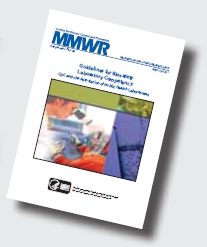
 |
|
Two State Hygienic Laboratory scientists embarked on a new venture in 2011 that they hope will increase the "mission critical" work of the Iowa environmental and public health laboratory. Lucy DesJardin, Ph.D., and John Vargo, Ph.D., coordinate the Lab's Research program, a new initiative charged with creating and organizing the applied research efforts of the Hygienic Laboratory. The program grew out of the formative work of the Research Task Force led by DesJardin and Vargo. Research in an environmental and public health laboratory usually focuses on the investigation of novel approaches or methods of testing that will positively impact public health. For example, during the Iowa mumps outbreak in 2006, Hygienic Laboratory staff developed a molecular diagnostic test for the detection of mumps virus that dramatically cut the testing time from days to just hours. This applied research was key to stopping the spread of the illness. In another example, molecular test development proved critical in responding to the 2009 H1N1 Influenza pandemic, where the assay was translated to a robotic nucleic acid extraction platform that allowed for high throughput testing.  "We really think that the applied research activities help in so many ways," DesJardin said. "They keep us on the cutting edge. They keep us relevant. They keep us able to respond appropriately." DesJardin and Vargo are the principle leaders of the Research program, representing infectious disease and environmental projects, respectively. "We would like to be at the forefront of developing new testing procedures, which we have done to a certain extent," said Vargo. "We've developed quite a few unique tests for emerging contaminants. These tests are not routinely offered at other laboratories." Pharmaceutical testing represents one such area. The Hygienic Laboratory is one of the few facilities in the nation that tests for pharmaceuticals in water. In a series of tests commissioned by the Chicago Tribune in 2008, the Laboratory found elevated levels of anti-seizure medicine and acetaminophen in the Chicago municipal water system. That work helped spur the city to increase the location and frequency of testing for its public water system. Another potentially groundbreaking study began in May. A team formed by the Research division was awarded funding to examine Iowa waterways for the presence of estrogenic (female hormones) and androgenic (male hormones) chemicals. The collaborative project between the Hygienic Lab and the University of Iowa Department of Occupational and Environmental Health seeks to determine if these chemicals are present in rural and urban surface water and whether testing for specific hormonal chemicals provides an accurate assessment of the total hormonal impairment of the water.  "Work done by others indicates that some species of fish and amphibians exhibit adverse reproductive development at hormonal levels as low as several parts per trillion in water," Vargo said. "This concentration level is nearly a thousand-fold lower than levels that contaminants such as pesticides have traditionally been monitored." Hygienic Lab collaborations that advance applied research sometimes span the state and unite national partners. In the case of a recent project, the Centers for Disease Control and Prevention recruited state public health laboratories to gain understanding of what appeared to be outbreaks of pertussis. The Hygienic Lab is one site that received CDC funding to evaluate a four-test panel to help determine if reported cases of disease initially attributed to pertussis were due to other factors. It has been hypothesized that outbreaks have been misidentified due to the type of testing performed, and were actually caused by poor methodology or by a closely related bacteria cross-reacting with the test. The Research program organized an Iowa team consisting of Jessica Owens, a UI Masters of Public Health graduate student; Elizabeth Miller, Ph.D., an epidemiologist who recently retired from the Iowa Department of Public Health; and Hygienic Lab staff. This study will continue into 2012. The coordinators of the Laboratory's Research initiative have a message for faculty, public health colleagues and others across the state and nation who want to collaborate to improve the quality of life. "'Let's sit down and talk,'" Vargo said. "We want to hear from people about what they are interested in and start a mutual dialogue. If we understand what people's needs are and they understand our capabilities, then we can see what sort of partnerships grow out of that." Success of the research effort also relies on the ideas, contacts and achievement in research of Hygienic Laboratory staff, according to DesJardin. "There is a lot of expertise at the Hygienic Laboratory. It would be beneficial to coalesce that strength and help us grow. Doing these kinds of studies is really mission critical, and success requires a collaborative effort. It's not a lone wolf activity, and we do much, much better when we work together." Associate director coauthors CDC biosafety publication Hygienic Laboratory Associate Director of the Disease Control Division Michael Pentella, Ph.D., is a co-author of the "Guidelines for Biosafety Laboratory Competency," published in the April 15 Centers for Disease Control and Prevention publication Morbidity and Mortality Weekly Report (MMWR). The guidelines were created to protect laboratory workers from exposure to infectious agents. Developed on behalf of the CDC and the Association for Public Health Laboratories (APHL), the guidelines were written for laboratorians working with biologic agents in biosafety level 2, 3 and 4 labs in research, clinical and industrial laboratories. The document - published as a MMWR supplement in April 2011 - outlines the skills, knowledge and abilities that are required to work safely in these specialized laboratories. In addition to the State Hygienic Laboratory, other agencies represented by the authors include the APHL, CDC, and the National Institutes of Health. The MMWR supplement is available on the CDC website. |

